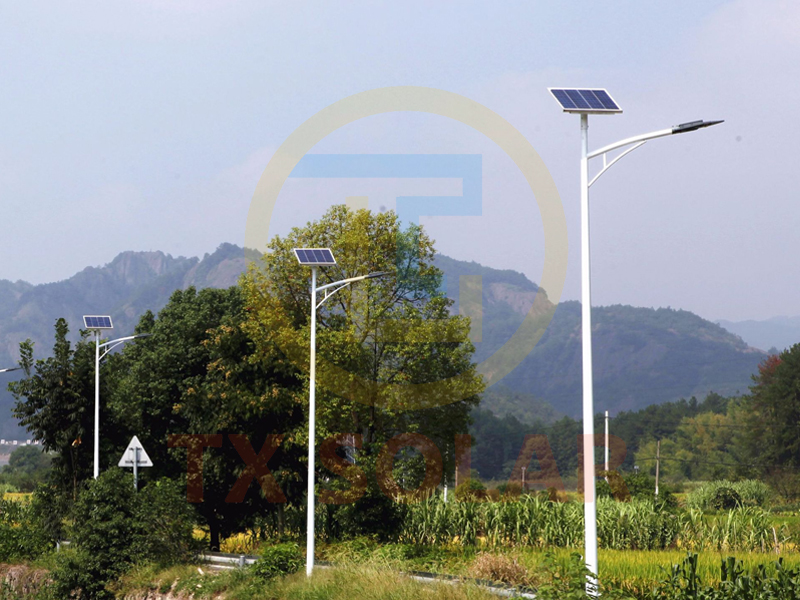In recent years, solar street lights have become a sustainable and cost-effective solution for rural lighting. These innovative lighting systems use solar energy to illuminate streets, pathways and public spaces, providing safety and security in areas that may lack traditional electricity infrastructure. However, choosing the right solar street lights for rural lighting can be a daunting task, considering the variety of options on the market. This article will guide you through the basic factors to consider when choosing solar street lights for rural areas.
Learn about solar street lights
Before diving into the selection process, it’s important to understand what solar street lights are. These systems typically consist of solar panels, LED lights, batteries, and control systems. Solar panels collect sunlight during the day, convert it into electricity, and store it in batteries for use at night. LED lights are favored for their energy efficiency and long life, making them ideal for rural lighting applications.
Key factors to consider
1. Lighting Requirements
The first step in selecting solar street lights for rural lighting is to assess the specific lighting needs of the area. Consider the following points:
- Lighting Level: Determines the required brightness (in lumens) based on lighting use. For example, side streets may require less lighting than main thoroughfares or public gathering areas.
- Coverage Area: Calculate the area required to be illuminated. This will help you determine how many solar street lights you need and their location.
2. Solar Panel Efficiency
The efficiency of solar panels is critical to the performance of solar street lights. Look for panels with high conversion rates, usually above 15%. This ensures that the lights can generate enough power even in low-sunlight conditions, which is especially important in rural areas that may experience seasonal changes in sunlight.
3. Battery Capacity
The battery is the heart of any solar street light system, storing energy for use at night. When choosing solar street lights, consider:
- Battery Type: Lithium-ion batteries are favored for their longevity and efficiency compared to lead-acid batteries.
- Capacity: Make sure the battery has enough capacity to power the light for the required duration, especially on cloudy days or in winter.
4. LED Quality
The quality of LED lights directly affects the performance and life of solar street lights. Looking for:
- Lumen Output: Higher lumen output means brighter light. Choose an LED that provides sufficient brightness for the intended application.
- Color Temperature: The color temperature of the LED affects visibility. Cooler white light (around 5000K) is usually preferred for outdoor lighting because it improves visibility.
5. Durability and Weather Resistance
Rural areas can expose solar street lights to harsh weather conditions, including rain, snow and extreme temperatures. Therefore, it is very important to choose a lamp with the following characteristics:
- Weight proof: The IP (Ingress Protection) rating is at least IP65, which means it is dust and water resistant.
- Strong material: Make sure the case is made of durable materials such as aluminum or high-quality plastic to withstand environmental stress.
6. Installation and Maintenance
When choosing solar street lights, consider the ease of installation and maintenance. Some systems come with preinstalled components, making them easier to set up. Also, check if the manufacturer provides clear installation guidelines and support.
- Maintenance Requirements: Choose a system that requires minimal maintenance. For rural communities, regular cleaning of solar panels and occasional battery checks should be manageable.
7. Cost and Budget
While solar street lights may cost more upfront than traditional lighting, they can save you money on electricity and maintenance costs in the long run. When developing a budget, consider:
- Initial Investment: Compare prices from different manufacturers to find a quality product that fits your budget.
- Long-term savings: Take into account the savings in electricity and maintenance costs over the life of the lamp, which can often exceed 25 years.
8. Manufacturer Reputation and Warranty
Finally, choose a reputable manufacturer with a proven track record in solar street lights. Research customer reviews and testimonials to gauge product performance and reliability. Also, check the warranty offered, as a longer warranty usually indicates confidence in the durability of the product.
In conclusion
Choosing the right solar street lights for rural lighting requires careful consideration of a variety of factors, including lighting requirements, solar panel efficiency, battery capacity, LED quality, durability, installation, cost and manufacturer reputation. By taking the time to evaluate these aspects, you can ensure that your investment in solar street lights will provide safe, reliable and sustainable lighting for rural communities. As the world shifts towards green energy solutions, solar street lights are a beacon of hope for improving safety and quality of life in rural areas.
Post time: Oct-16-2024

